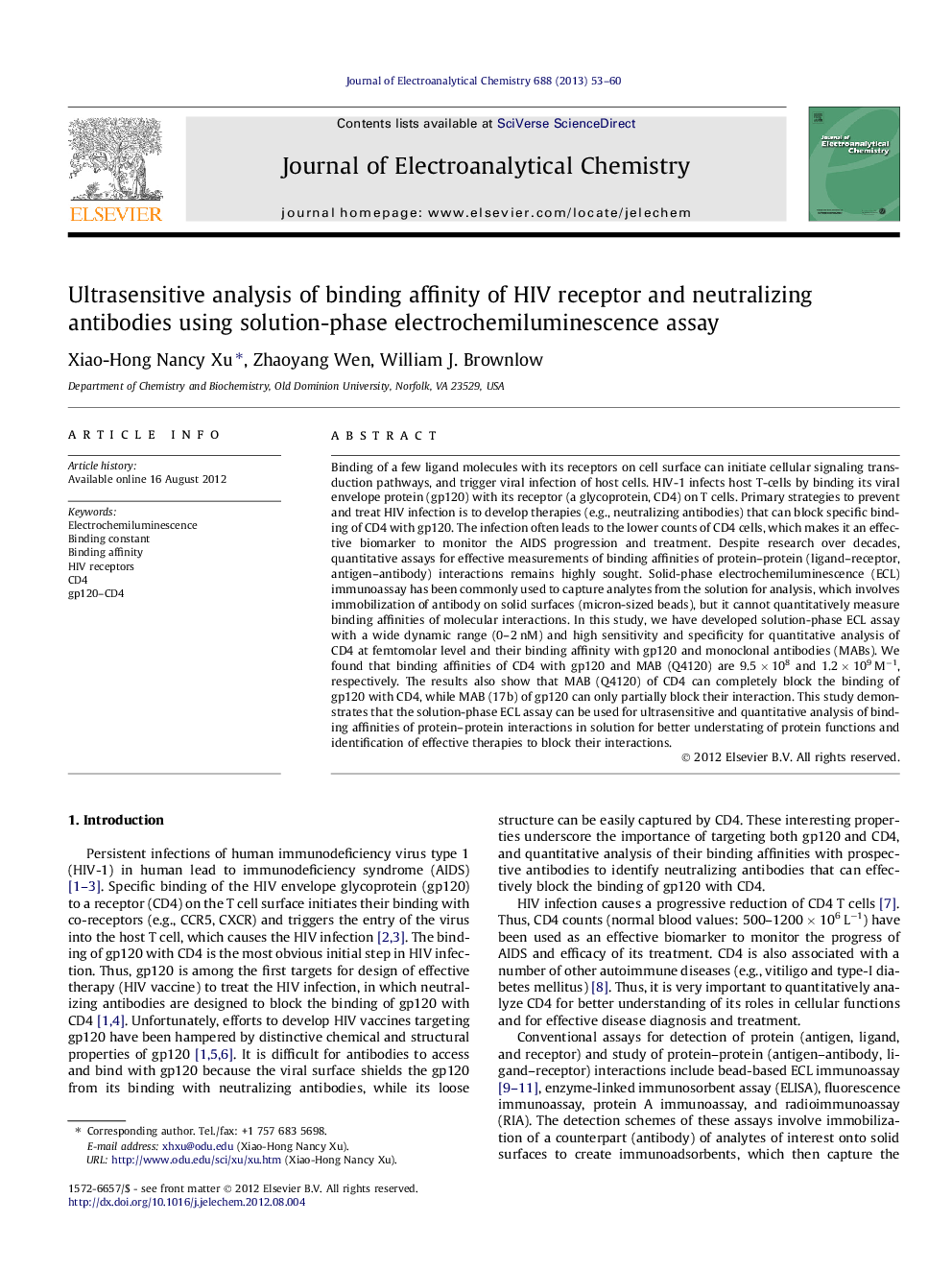| کد مقاله | کد نشریه | سال انتشار | مقاله انگلیسی | نسخه تمام متن |
|---|---|---|---|---|
| 219198 | 463252 | 2013 | 8 صفحه PDF | دانلود رایگان |

Binding of a few ligand molecules with its receptors on cell surface can initiate cellular signaling transduction pathways, and trigger viral infection of host cells. HIV-1 infects host T-cells by binding its viral envelope protein (gp120) with its receptor (a glycoprotein, CD4) on T cells. Primary strategies to prevent and treat HIV infection is to develop therapies (e.g., neutralizing antibodies) that can block specific binding of CD4 with gp120. The infection often leads to the lower counts of CD4 cells, which makes it an effective biomarker to monitor the AIDS progression and treatment. Despite research over decades, quantitative assays for effective measurements of binding affinities of protein–protein (ligand–receptor, antigen–antibody) interactions remains highly sought. Solid-phase electrochemiluminescence (ECL) immunoassay has been commonly used to capture analytes from the solution for analysis, which involves immobilization of antibody on solid surfaces (micron-sized beads), but it cannot quantitatively measure binding affinities of molecular interactions. In this study, we have developed solution-phase ECL assay with a wide dynamic range (0–2 nM) and high sensitivity and specificity for quantitative analysis of CD4 at femtomolar level and their binding affinity with gp120 and monoclonal antibodies (MABs). We found that binding affinities of CD4 with gp120 and MAB (Q4120) are 9.5 × 108 and 1.2 × 109 M−1, respectively. The results also show that MAB (Q4120) of CD4 can completely block the binding of gp120 with CD4, while MAB (17b) of gp120 can only partially block their interaction. This study demonstrates that the solution-phase ECL assay can be used for ultrasensitive and quantitative analysis of binding affinities of protein–protein interactions in solution for better understating of protein functions and identification of effective therapies to block their interactions.
Figure optionsDownload as PowerPoint slideHighlights
► We develop a solution-phase ECL assay for quantitative analysis of biomarkers.
► We use the assay to study binding affinities and binding ratios of HIV receptors.
► We use the assay to identify neutralizing antibodies for blocking of HIV infection.
► We show that the assay can be used to study binding and functions of proteins.
► ECL is a powerful tool to detect biomarkers for disease diagnosis and therapy.
Journal: Journal of Electroanalytical Chemistry - Volume 688, 1 January 2013, Pages 53–60